When Kosice became European Capital of Culture in 2013, the municipal authorities took a bold decision: resisting the temptation of putting all the money into their historic town centre, they allocated a significant proportion of the budget to the city’s modern, residential areas.
Rather than hiding these quarters away – in terms of surface as well as the number of inhabitants by far the largest section of the town – they turned them very much into the centrepiece of their “modern art exhibition”.
The Murals of Kosice
Kosice’s city fathers had the courage of owning up to their city’s history, because the fact remains that Kosice is, by and large, a relatively young town.
There is, as we already told you, a historic Old Town with a grand medieval Cathedral, a narrow maze of side streets and some splendid Austro-Hungarian architecture, but until about a hundred years ago, Kosice was essentially a provincial town in northern Hungary with app. 40,000 inhabitants.
Read also: Kosice and the Tides of History
Kosice’s “big leap forward” occurred in the 1960s when the Czechoslovak government decided to turn the town into the country’s foremost steel producer. (It still is, although the mill is now owned by US Steel.) A whole new town was built to welcome thousands of workers from all over the country, and it is this town that we are going to explore in today’s walk.
You will be seeing some of the best murals in the world, painted on Kosice’s tower block walls as part of the European Capital of Culture arts festival, while getting the opportunity of familiarizing yourself with the architecture of one of Eastern Europe’s largest Communist new towns.
Read also: The Log Cabin Penthouse of Kosice
Kosice’s new town is certainly no Florence or Montmartre, but neither is it architectural Armageddon. Built on a human scale throughout, it has a rugged charm of its own, and you may begin to understand why many Eastern Europeans are so defensive about their housing estates.
To see for ourselves the murals of Kosice, we start our walk outside the Kulturpark, a group of former army barracks that has – also under the European Capital of Culture project – been turned into a museum and cultural centre.
Where to see the murals of Kosice
Walk into Zborovska street for one of the project’s signatory murals, contributed by a Chilean artist called INTI (“The Sun”) and painted in a single day. (Most murals painters are former graffitti artists and used to working fast, for reasons that I think you can work out for yourselves.)
Continue to the end of the street and turn left into Sturova, and, after approx. 500 m, right into Zriedlova.
A little left to the corner with Florianska, you can see the work of Sepe and Roem, two artists from Poland (where the mural painting movement is particularly strong). For this painting, they worked together for the first time, one – as is often the case in such arrangements – contributing the figurative element, the other the geometric patterns.
Continue down Florianska (what appears to be a cul-de-sac) straight into Ungarova and Laborecka (only the name of the street changes).
Turn right into Polovnicka for this contribution by CART 1 from Lyon …
… whose ties with the organizers of the murals project go back to 2007, long before the Cultural Capital project. His painting adorns a central heating station which is still in operation, generating not only heat but also humidity – which is why the paint is beginning to peel.
This is one general problem of mural paintings: “We do not maintain the works”, explains Viktor Feher, Artistic Director of the project, “you might say that their ephemeral quality is part of the overall concept.”
Continue into Zuzkin Park – in the direction of the Tesco supermarket – for this work by Erica Il Cane from Bologna …
… one of the many paintings on show with a vigorous political message.
“Most artists in this field have strong political opinions, and their works for the exhibition already represent some sort of a compromise”, explains Viktor Feher – although the compromise, in this case, went not nearly far enough for some local commentators who called the mural “a monument for rats”.
Turn left behind the supermarket and left again when you reach the main road, called Slovenského Národného Povstania (“SNP”). After about 400 m, at no. 61, you can find this work by Bezt and Pener from Poland …
… praised by the American OZ Arts Magazine as the “best mural in the world”. (It is also the exhibition’s largest work.) The painting was completed in 4 days, with both artists working simultaneously on hydraulic lifts.
Retrace your steps on SNP now and turn left into Ruzinska (just before the park). You are now approaching the centre of Terrasa, the largest tower block suburb in Slovakia. All the buildings in this area were constructed to accommodate the steel workers and their families who had come from all parts of the country in the 1960s and 1970s.
In this part of town, you can find a specifically high concentration of murals, starting with Robert Proch’s and Pener’s “Liar”.
Turn right into Brigadnicka, passing this work by Radovan Repicky which adorns the shed that served as the HQ for the project’s Organization Committee.
Continue round the skater park into Ludova for this geometric piece by RAZK 437 …
… and, eventually, to this work by a Brazilian artist …
… “the most complained about of all our murals” as Viktor Feher recalls. One, because it appears to show two men kissing, but also because the artist left much of the crumbling wall in its original state rather than covering the whole wall with paint – something that most of the owners would have preferred, not only, one suspects, for aesthetic reasons.
“We could only commission a painting once 51 percent of the owners’ association had agreed”, Viktor Feher remembers, “but not all the artists were able to inform the planning process with detailed sketches. So, in some cases, the owners took a leap into the dark.”
Continue to the corner of Ludova and Hronska for this work by the Sheffield artist Phlegm.
Turn left and then right into Popradska where you can see this mural by the local painter REUS …
… and, a little further down the same road, this effort by CAKES from Prague, a former graffitti artist, which bedecks, of all places, the local police station.
“When CAKES heard what building he had been commissioned to decorate, he almost choked”, chuckles Viktor Feher.
This is where today’s walk ends.
Turn right now, making your way back to the SNP highway. From there, you are allowed to catch a bus back to the town centre, because you will need all your energy for our next walk which will take us into the countryside around Kosice.

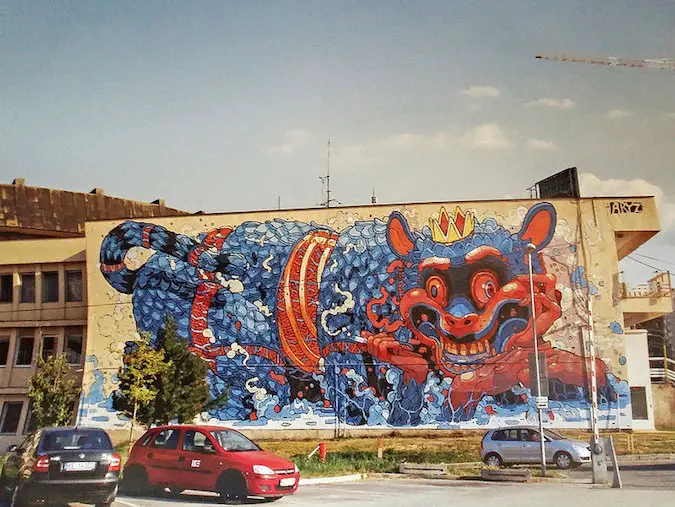
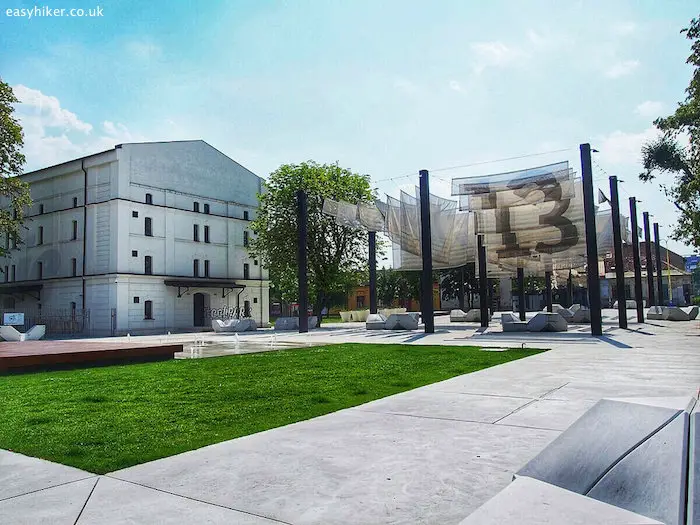
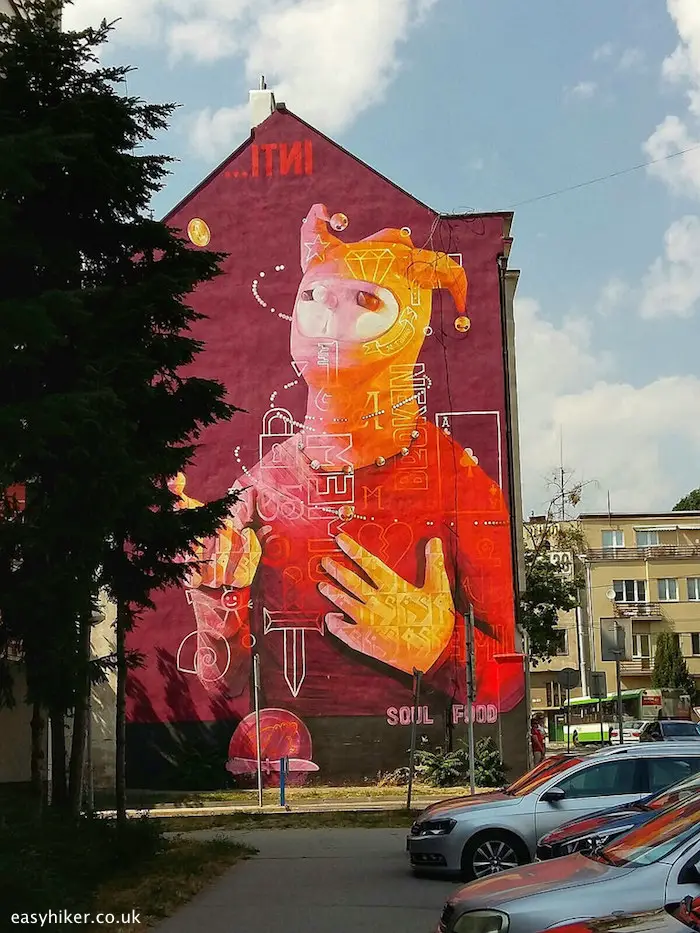
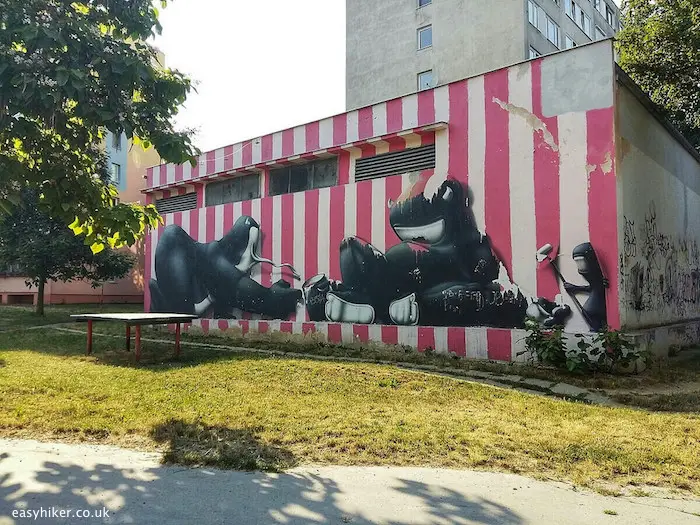
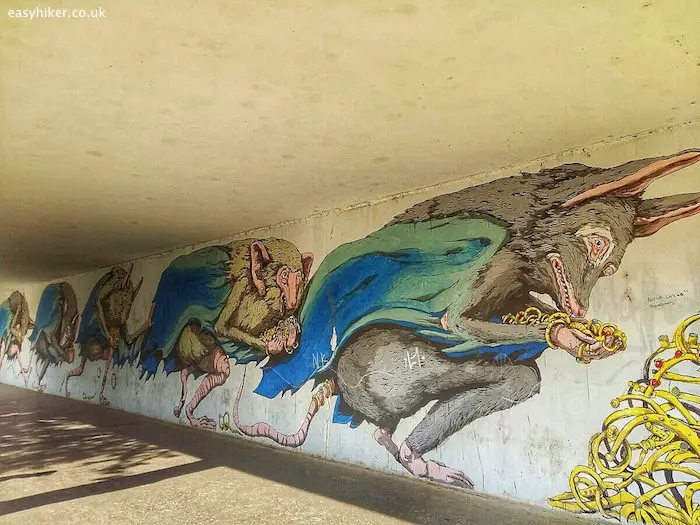
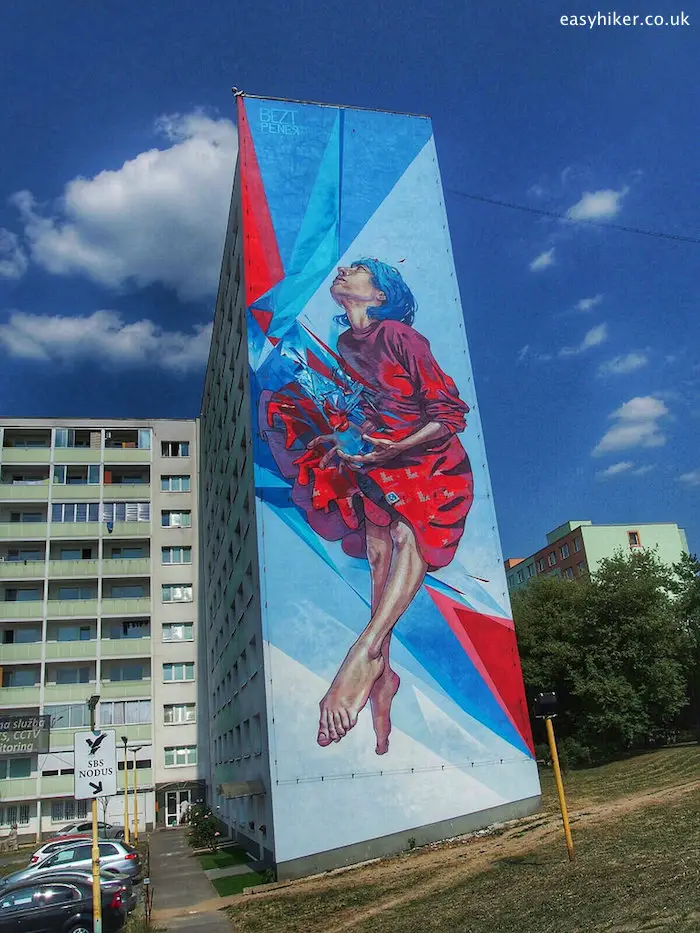
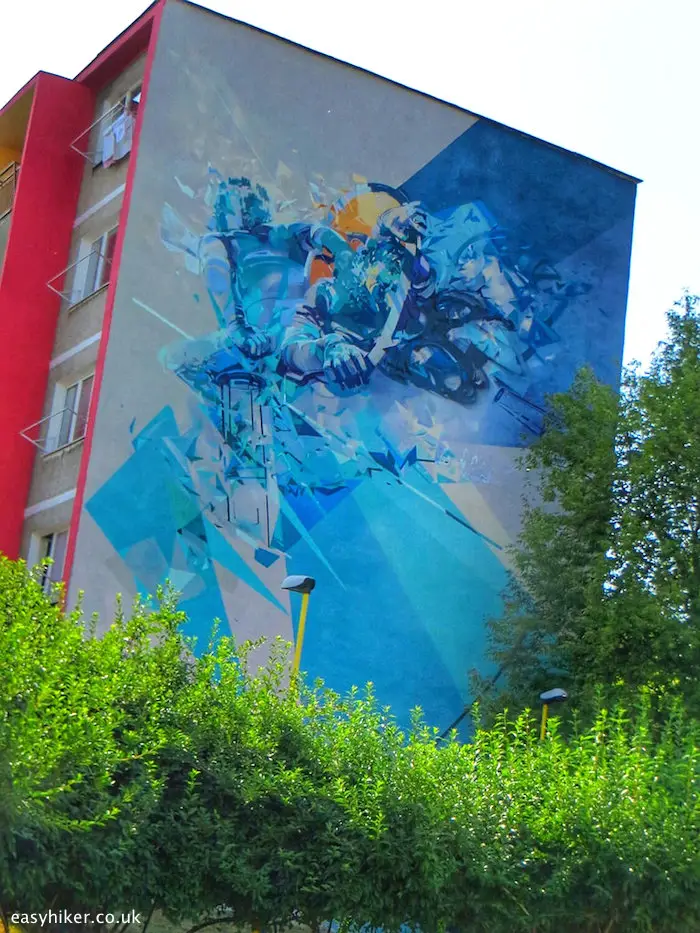
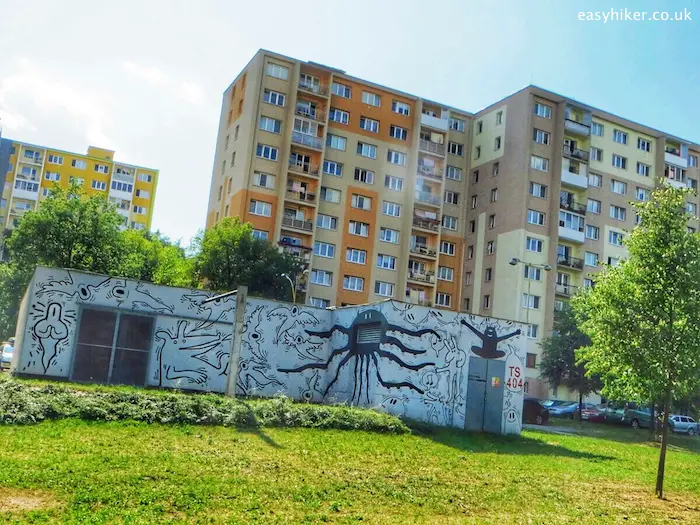
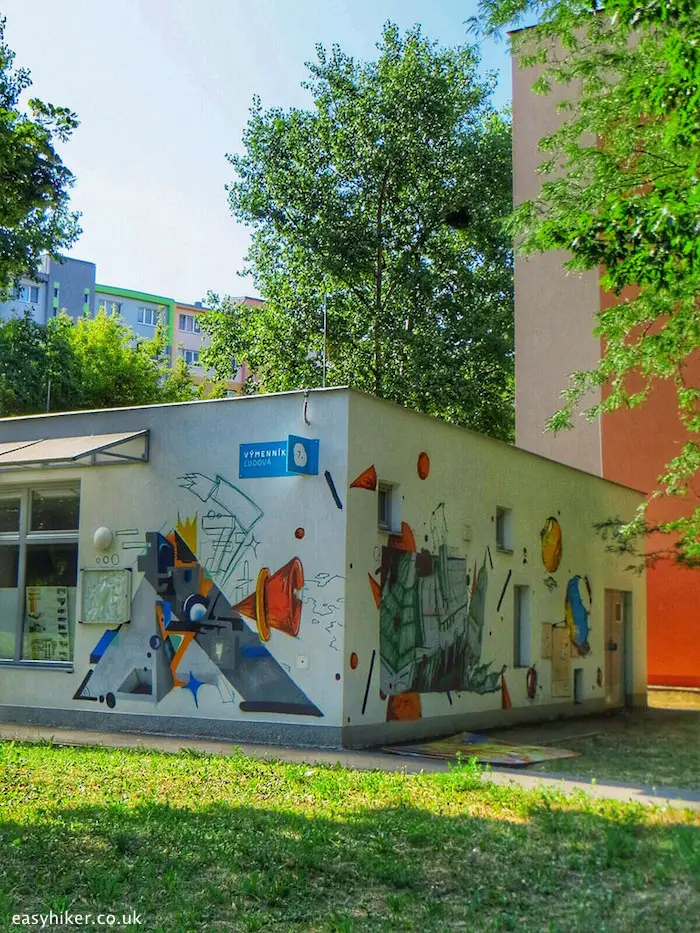
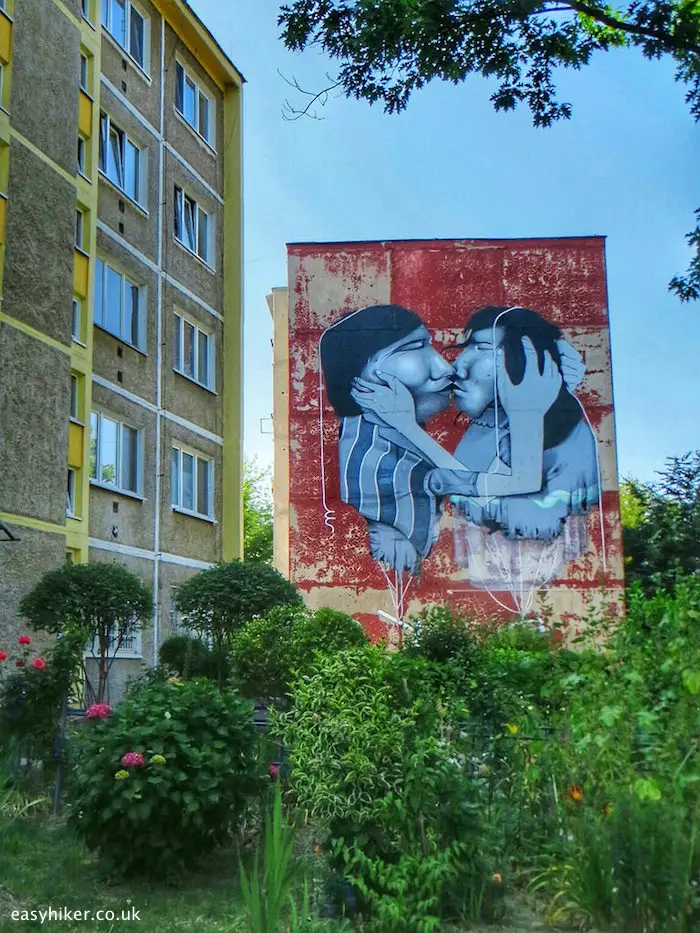
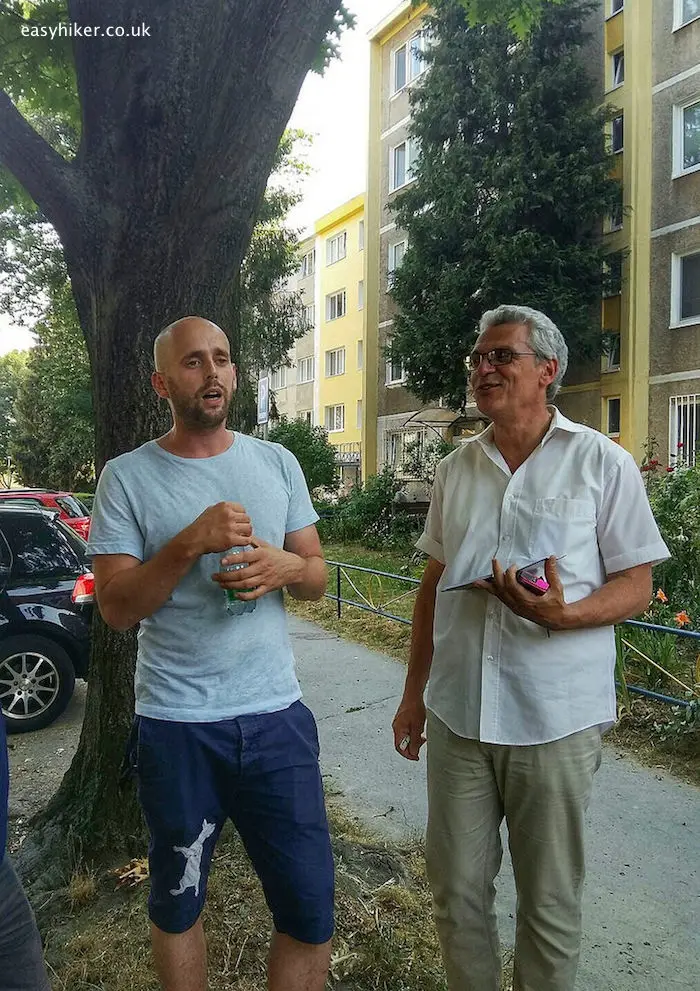
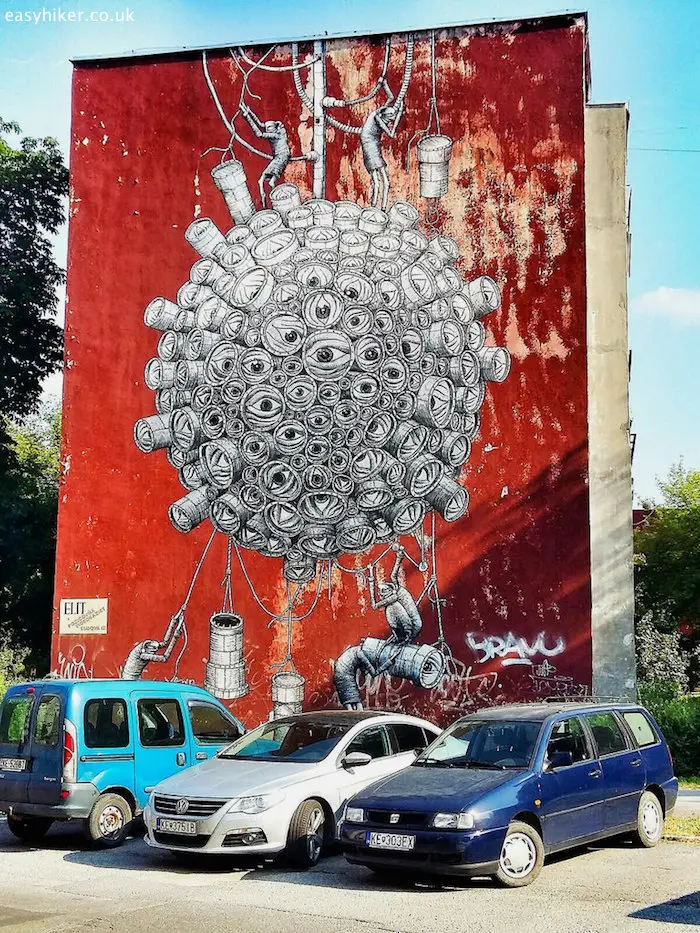
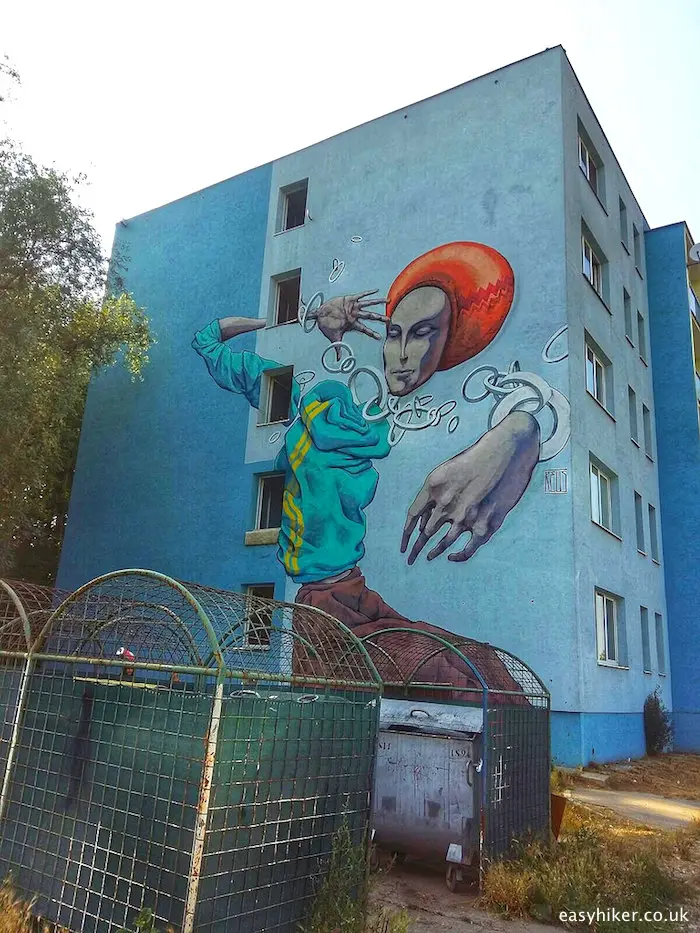
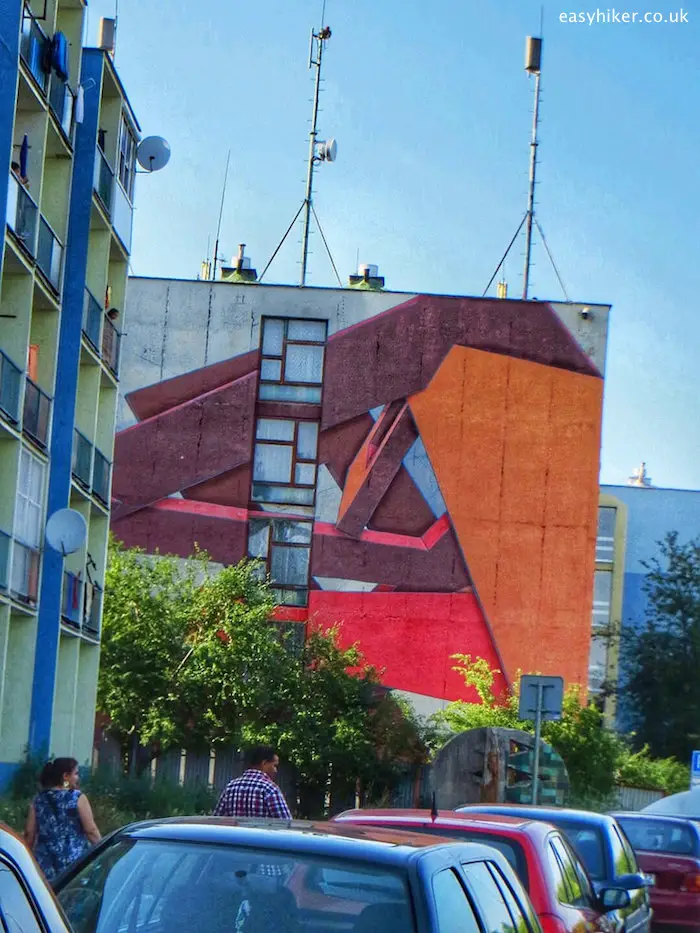
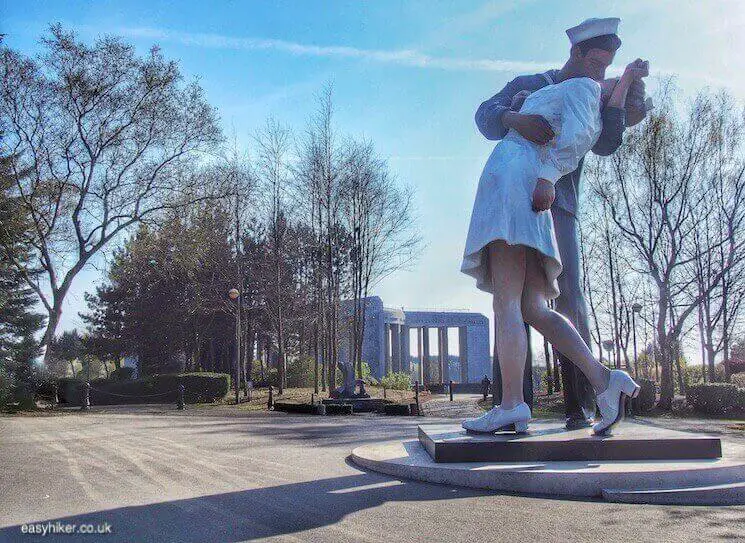
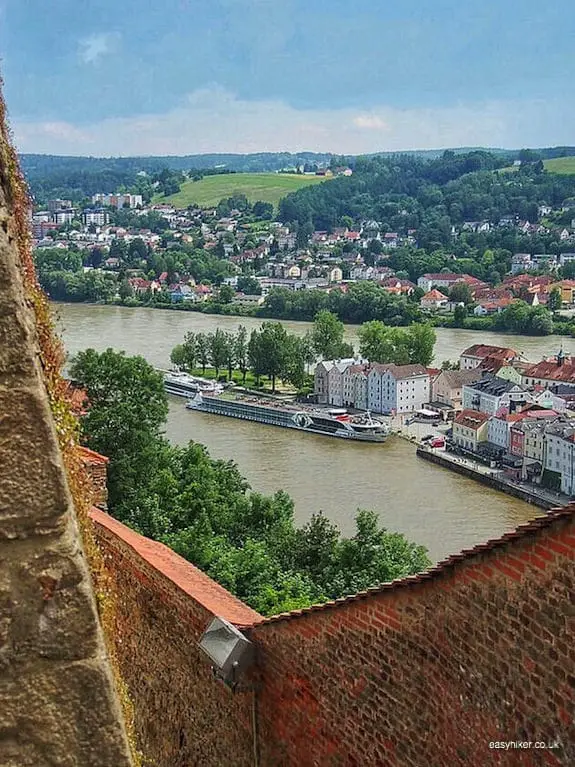
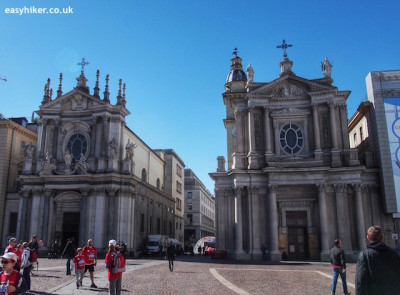
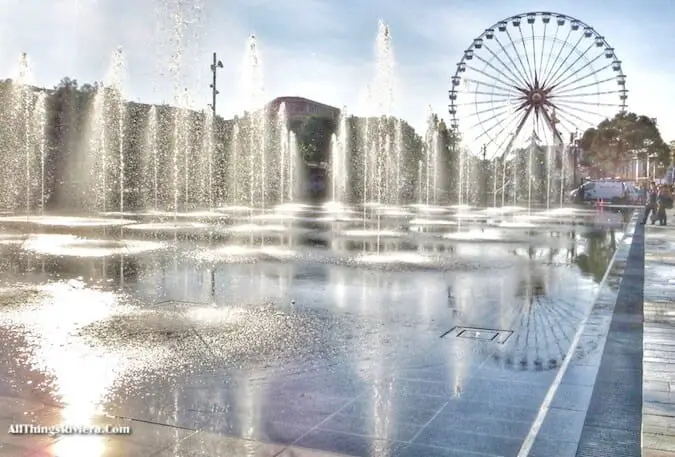
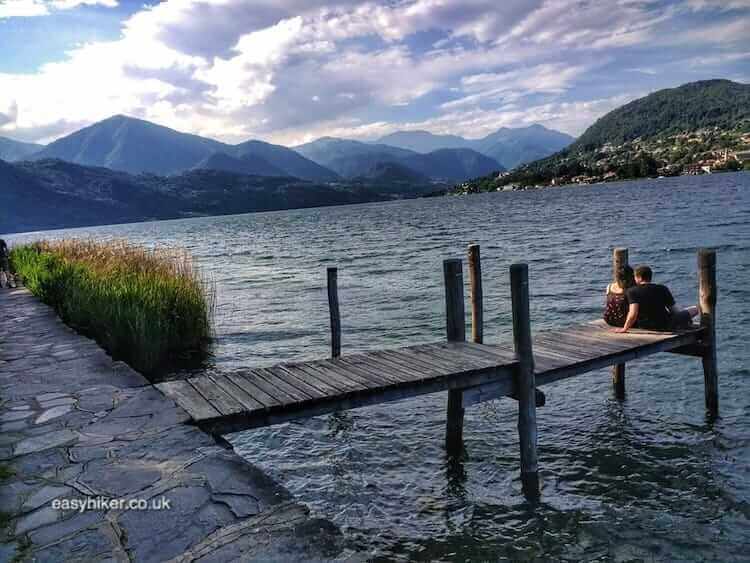
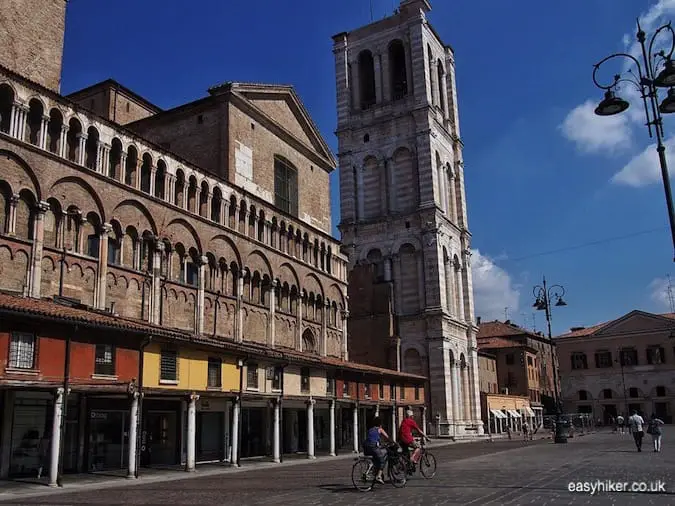
Interesting art :)
Leigh, I must also say, they spent their UN budget well!
I hadn’t heard of Kosoce either – and what a forward thinking group running the city. Love the murals and how they’ve added so much to the town. I actually liked the “two men kissing” mural.
It is, Jeff. We were similarly astounded when we found out how some did it in no time.
How spectacular!! And to think they complete these in such a short amount of time! Incredibly bold and beautiful.
Glad you enjoyed the “walk”, Cathy.
You are not alone, Meg. Neither did we until we got the invitation to visit it. We were of course more than pleasantly surprised.
I enjoyed taking this virtual art walk with you in Kosice. Love the murals. I think it’s great that the city leaders really made the most of their Capital of Culture designation to benefit the city and people best.
Crazy, would you believe I had never heard of Kosice before this week, though this is the second post which has popped up in my feed about the street art scene – I guess it’s a sign I should start planning a trip! Really does seem to have one of the most concentrated and best mural scenes in the world – I was really fascinated by the political murals they had all throughout Belfast when we visited so I would love to explore the streets here too!
Thanks!
I believe Poland has some good ones too, Jody. Many of the artists who participated in this project come from there.
Yes, Kosice has used their status of European Capital of Culture very well. They’ve improved the city as much as they could to really make it worthy for a visit, Miranda.
I love that the politicians of Kosice had the foresight to invest in all this awesome public art. It’s even better that local residents had a say in the art painted on their buildings. The political themes of the graffiti are interesting – reminds me a bit of the murals of Diego Rivera, commentary on greed and society. Thanks for sharing!
Love these images. Seems like there is so much to the town. It truly is deserving of its cultural capital status especially since it doesn’t just focus on the past. It makes me wonder if there are other cities in Europe that also have a thriving street art scene. I didn’t expect to find this in Slovakia!
That particular mural was really very impressive seen up close, Molly. Before then, we’ve only seen small works on the walls of Paris, et al. Seeing such huge exterior mural paintings on buildings was quite an experience. And they were well done too!
We are equally amused, Marcia. But these murals are awesome, in the true sense of the word!
Some great murals in this part of Europe. I love the blue and red design by Bezt & Pener. In Granada Spain we also have a fair share of wall murals which contrast with the Andalusian patios and historic monuments.
Beautiful, Michael. I love the collaboration between the artists and municipality. My fave would have to be the rats and I had a good laugh about CAKES’ building – interesting names they all have.
There really is quite a lot to see in Kosice!